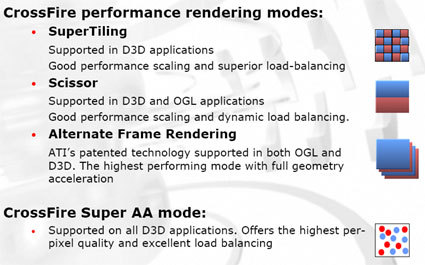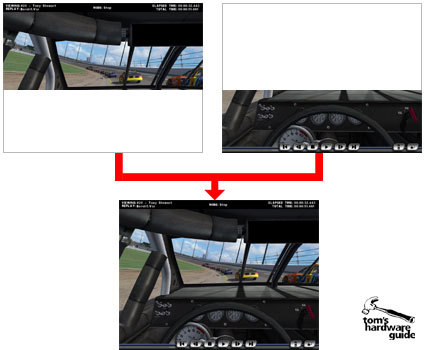ATI Puts NVIDIA's SLI in the CrossFire
Operating Modes: The Four Rendering Modes
ATI's CrossFire operation presently allows four multi-VPU operating modes:
SuperTiling
SuperTiling is CrossFire's standard dual mode. It works in all Direct3D games and applications. Modern graphics processors do not compute the entire image at once, but divide it into small squares - called "quads" - which feed the processor's individual pipelines. In SuperTiling the screen is additionally split up like a checkerboard (see picture).
Pro: It works in all games and applications. Optimum load balancing (on the pixel side)
Con: Depending on the application, the performance gain is only slight (factor 1.15). Both cards must compute the entire geometry of the scene, even if they only calculate half the pixel information. In games requiring more pixel shader horsepower, the performance gain should be substantially higher. Note: According to the latest information, SuperTiling does not work with OpenGL games.
Scissor
The Scissor rendering model divides the screen horizontally. One card calculates the upper half, the other the lower half. Dynamic load balancing ensures that both cards are subjected to a load that is as equal as possible. Scissor is the standard mode for OpenGL applications.
Pro: It works in most games.
Con: As for SuperTiling mode, both cards must always calculate the complete scene geometry.
Get Tom's Hardware's best news and in-depth reviews, straight to your inbox.
Current page: Operating Modes: The Four Rendering Modes
Prev Page A Cross Between Master And Slave Next Page Alternate Frame Rendering

